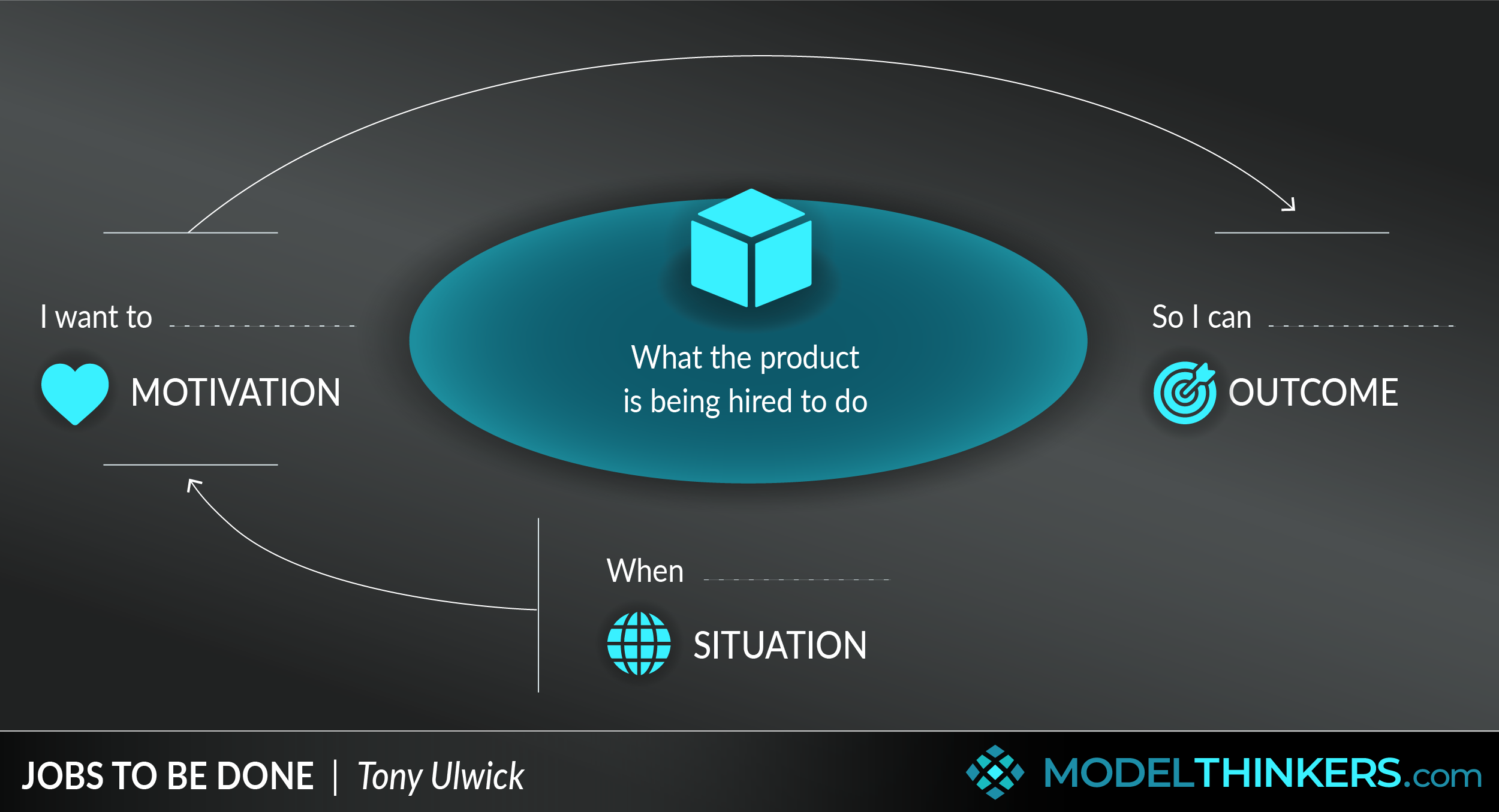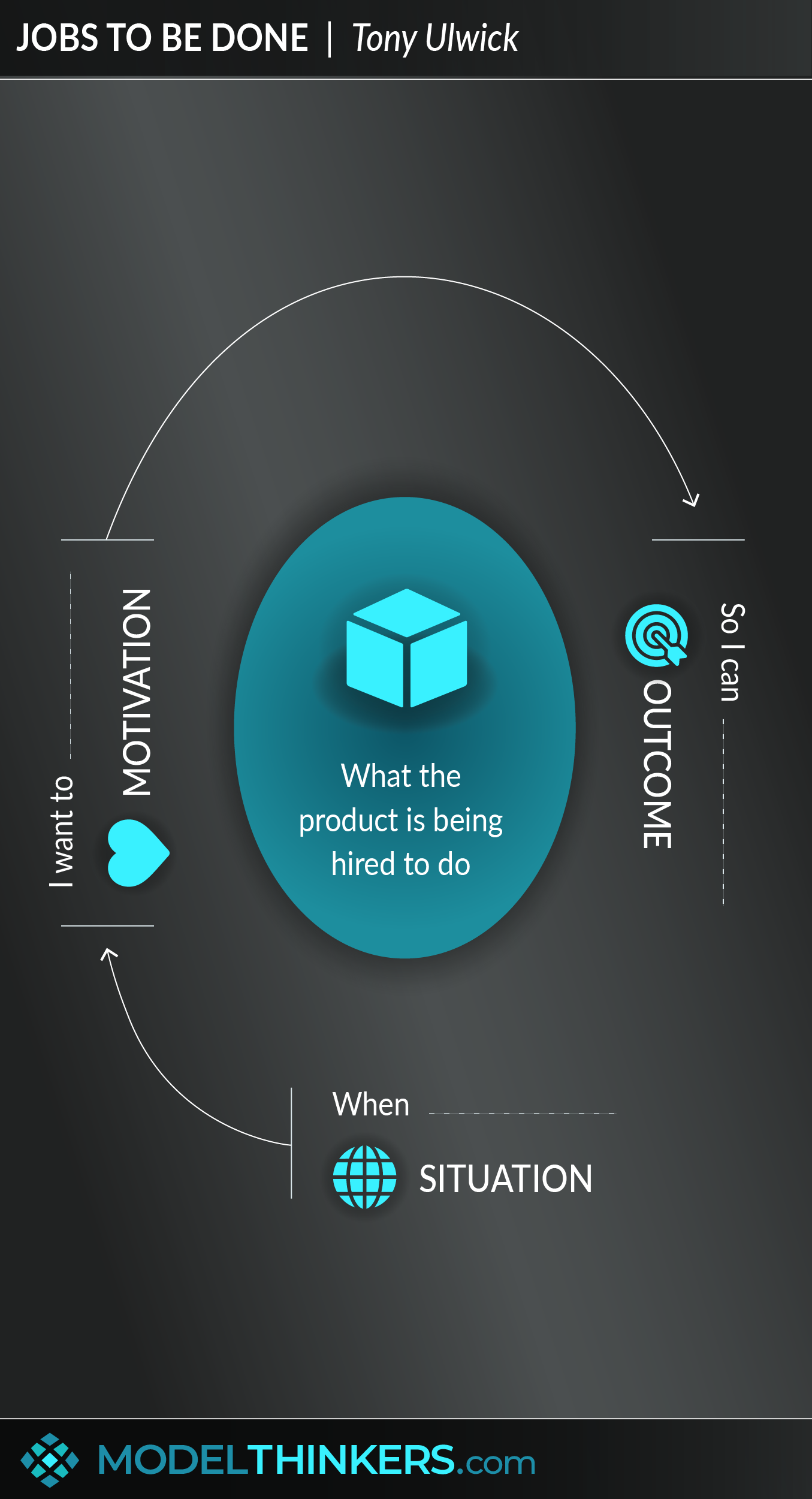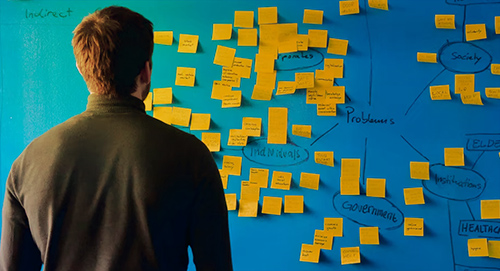

 0 saved
0 saved
 16.8K views
16.8K views








Sick of long backstories behind your Personas? Still want to design customer-centric solutions with clear value? Well, you might have come to the right place.
Jobs to be Done (JTBD) helps you deliver value by understanding what your product or service is ‘being hired to do’.
THREE STEPS.
Specifically, Jobs to be Done helps you to understand:
- what a customer wants to do
- in a given situation
- to achieve specific results.
Unlike Personas, JTBD is concerned with what customers are trying to achieve rather than who they are.
BEYOND PERSONALITY TRAITS.
Bob Moesta, one of the early architects of JTBD explained: “If you want to build a great software product, making crucial decisions based around a series of personality traits won’t get you there. That’s because products don’t match people; they match problems.”
The Intercom document argues that personas help to target or define segments but, if that is known, then the JTBD approach is more useful.
VARIATIONS.
Practitioners tend to have different applications of JTBD, largely related to the level of customer need identified. One can be more tactical — focusing on tasks required. The other approach digs deeper, aiming to uncover underlying outcomes that customers are trying to achieve.
In the second method, the tasks are merely a means to an end and an innovative approach that delivers the desired outcome might be preferable.
Either way, JTBD should avoid references to existing products, focusing on the job or outcome at hand. As the old quote that was (falsely) attributed to Henry Ford explained: “If I had asked people what they want, they would have said faster horses.”
IN YOUR LATTICEWORK.
There is an obvious love/hate relationship between this model and Personas — and with that comes links to Empathy Maps and Journey Mapping.
But perhaps the most interesting connection here is between JTBD and Value Proposition which brings this model to life in a business and customer-centric context.




- Put the job to be done at the center of your design and business.
Rather than define companies around markets, products or solutions, use the jobs to be done model to target situational customer needs and solve problems that matter to them.
- Ask, ‘what is my product hired to do?’
Consider what a customer is hiring your product or service to achieve? Focusing on their expected outcome in a situation rather than your assumptions about what problem you tried to solve. Particularly consider ‘switch experiences’ where customers have adopted a different product to dig deeper into what job they were trying to achieve as a result.
- Ask, ‘why are customers firing my product?’
Attrition is a result of your product not effectively helping to support a customer to do a job that they find valuable. Understanding your lost customers can help reveal new opportunities to deliver value and expand your view on what they wanted to achieve.
- Help customers get the entire job done.
One approach to the jobs to be done model considers a key to success is enabling the customer to get the entire job done in order to increase efficiency and customer satisfaction. This is obviously dependent on how broadly such jobs are defined.
- Use JTBD to test sustainability.
Building your business around a product is risky as the product can become obsolete at one point, while focusing on providing solutions to get the job done best ensures longevity and lowers the risk for disruption.
The JTBD approach has been criticised by proponents of personas for not effectively promoting empathy. Part of the attraction of personas for many was to go beyond a list of requirements and consider the human and emotional experience of people. Others would counter this, suggesting that an emotional element can be incorporated into JTBD.
As called out by the Intercom playbook, JTBD does not handle segment considerations effectively, so different users might be a driver of differentiation over the situation/ outcome approach.
Milkshakes from personas to JBTD.
Advocate of the JBTD model, Clay Christensen provided an example around milkshakes. He described a food chain that wanted to sell more milkshakes taking a user-centric approach by understanding their audience and making changes based on demographic analysis and psychographic variables. However this did not create results.
Based on Christensen’s recommendation, they switched to a JTBD approach and asked ‘what job did they want the milkshake to do?’ Answering this question led them to discover 40% of milkshakes were ‘hired’ in the morning to provide sustenance for a long commute. They were more convenient than energy bars and didn’t leave you needing a bathroom break like coffee. This insight helped them frame milkshakes as a convenient snack that powered up people until lunch - making them thicker and including chunks of fruits etc..
Why did the chicken cross the road?
In the Jobs To Be Done Playbook by Jim Kalback from Mural, he uses the scenario of ‘why did the chicken cross the road?’. He goes on to break that job down into key steps including deciding to cross the road, selecting a point to cross, choosing a time to cross, check for traffic and so on. A less task based approach might consider what was so good about the other side of the road and what did it give the chicken.
Job to be done is a useful way to reframe a product or business design problem, by focusing on situational motivation and outcomes. As such it’s part of a broader product design and innovation toolkit.
Use the following examples of connected and complementary models to weave jobs to be done into your broader latticework of mental models. Alternatively, discover your own connections by exploring the category list above.
Connected models:
- Personas: while often counterposed, we believe that these two models exist on a spectrum and can be combined as required.
- Design thinking: JTBD is a tool that can be used as part of this process.
- Features vs benefits: in many ways JTBD is a reframe of this familiar model.
- Journey maps: can be used to track JTBD ideas over an experience.
- Empathy maps: capturing a snapshot of JTBD ideas, though straying more into persona territory.
Complementary models:
- Zawinski’s law: use JTBD to help stop feature bloating.
- Minimum viable product: again, using JTBD to target core jobs and motivations.
Tony Ulwick, founder of the innovation consulting firm Strategyn, can be considered the originator of JTBD through his work in outcome driven innovation (ODI). The JTBD term was popularised by Harvard Business Professor Clayton Christensen in this 2007 Sloan article.
In addition, Alan Kement’s jobs to be done online resource provides a robust and nuanced approach to understanding and applying the model in different contexts. Kement writes in detail about what he sees as two different approaches to JTBD by both Ulwick and Christensen.
 My Notes
My Notes
Oops, That’s Members’ Only!
Fortunately, it only costs US$5/month to Join ModelThinkers and access everything so that you can rapidly discover, learn, and apply the world’s most powerful ideas.
ModelThinkers membership at a glance:






“Yeah, we hate pop ups too. But we wanted to let you know that, with ModelThinkers, we’re making it easier for you to adapt, innovate and create value. We hope you’ll join us and the growing community of ModelThinkers today.”



































































































